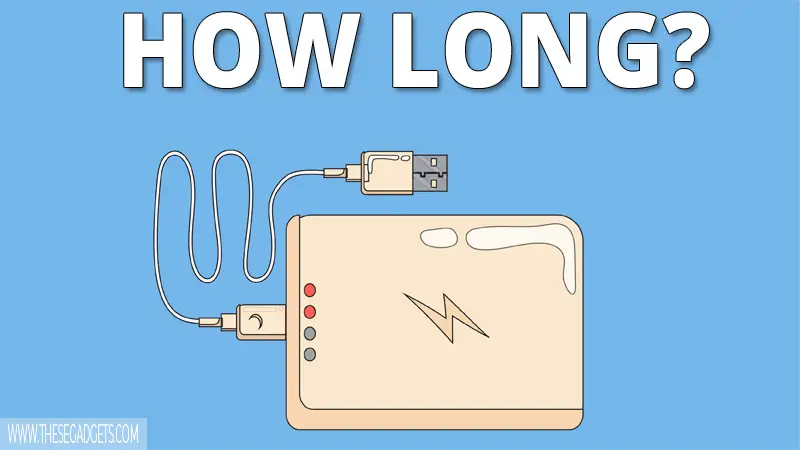A power bank, also known as a portable charger, is a portable device that stores electrical energy and is designed to charge other electronic devices on the go. So, how long does a power bank keep its charge?
A high-quality power bank can keep its charge for up to 6 months. While a low-quality power bank can hold its charge for up to 4 weeks.
Contents
Why Do Power Banks Lose Their Charge Over Time?
Power banks lose their charge over time because of self-discharge, standby power consumption, or old battery.
Self-discharge is a natural process that occurs in lithium-ion batteries. Even when not in use, lithium batteries slowly lose their charge over time due to internal chemical reactions. The rate of self-discharge varies depending on the battery and power bank quality. However, it’s reported that the self-charge for lithium batteries is 5%/month.
The standby power consumption refers to when the internal circuitry consumes a small amount of power even when the power bank isn’t actively in use. This standby power consumption can contribute to the gradual discharge of the power bank’s battery over time.
An old, faulty, or damaged battery will also discharge at a faster rate. For instance, lithium batteries have a certain number of charging cycles, 300-500. Once the lithium batteries complete their charging cycle, their performance and capacity will gradually decrease, which can lead to a higher discharge rate. A (1) charging cycle is completed when the battery goes from full to empty (100-0%) and full again (0-100%).
Related Read: How Long Does a Power Bank Last?
How To Make Power Bank Hold Its Charge Longer?
To make power bank hold its charge longer, do the following.
1. Use a High-Quality and Capacity Power Bank
A high-quality and capacity power bank will hold its charger longer than low-quality power banks. High-quality power banks have in-built protective circuits and other hardware that will protect the battery from overcharging and overheating.
A higher-capacity power bank will hold its charge longer because it has more capacity and the discharge rate won’t affect them as much as a low-capacity power bank.
2. Store in a Cool Environment
Store the power bank in a cool, dry place away from the heat or direct sunlight, when not in use. High temperatures will increase the discharge rate and reduce the overall battery life. However, the temperature shouldn’t be too low as that can also affect the self-discharge rate.
You should store power banks in a room where the temperature is between 30-90 degrees. Avoid keeping the power banks in a moist area as moisture can damage the battery.
3. Avoid full Discharge
All lithium batteries will start to self-discharge over time if not in use. It’s recommended to avoid letting the battery fully discharge (0%) as that can damage the battery and decrease its performance and capacity. Ensure to charge power banks every three (3) months when not in use.
4. Use The Power Bank Only When You Need It
Every power bank has an amount of charging cycles it can do before the battery starts to take a hit. Most of the time, power banks can do up to 500 charging cycles.
Even if you charge your phone by 20% it still counts as a half-charging cycle. That’s why it’s recommended to use a power bank to fully charge your phone.
It’s also not recommended to use the pass-through charging feature as it can cause the power bank to overheat.
